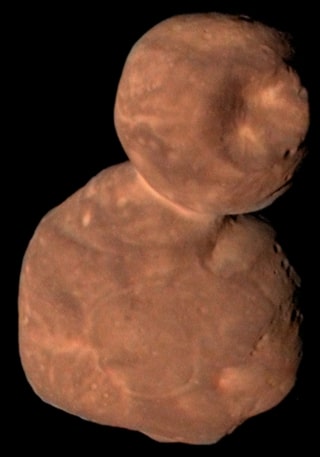
NASA scientists from the New Horizons mission have re-named the most distant object ever explored after political controversy about its initial name.
Kuiper Belt Object 2014 MU69 was previously nicknamed Ultima Thule, a medieval term meaning a location beyond the borders of the known world. But a new name was required after criticisms were raised about the term’s political connotations. The word “Thule” was historically used by Nazi predecessors, claimed to describe the birthplace of the Aryan race. The term is still used in some neo-Nazi and alt-right circles today.
To rid the astronomical object of such connotations, it has been given a new name, “Arrokoth.” The name comes from a Native American term that means “sky,” and elders from the Powhatan Tribe gave the New Horizons team permission to use it. It’s an appropriate name as two of the tools used to detect the object, the Hubble Space Telescope and the New Horizons mission, are both operated from Maryland, the home of many Powhatan people.
“We graciously accept this gift from the Powhatan people,” Lori Glaze, director of NASA’s Planetary Science Division, said in a statement. “Bestowing the name Arrokoth signifies the strength and endurance of the indigenous Algonquian people of the Chesapeake region. Their heritage continues to be a guiding light for all who search for meaning and understanding of the origins of the universe and the celestial connection of humanity.”
In addition to removing the object from controversy, the New Horizons team agrees that the new name denotes an appropriate meaning for the mission. “The name ‘Arrokoth’ reflects the inspiration of looking to the skies and wondering about the stars and worlds beyond our own,” Alan Stern, New Horizons principal investigator from the Southwest Research Institute, said in the same statement. “That desire to learn is at the heart of the New Horizons mission, and we’re honored to join with the Powhatan community and people of Maryland in this celebration of discovery.”
Investigation of the distant object turned up information about how planets are created, as objects like this form planetary building blocks. “Data from the newly-named Arrokoth, has given us clues about the formation of planets and our cosmic origins,” said Marc Buie, of the Southwest Research Institute. “We believe this ancient body, composed of two distinct lobes that merged into one entity, may harbor answers that contribute to our understanding of the origin of life on Earth.”



